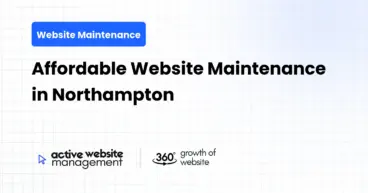December 24, 2024
7 min read
Shopify is one of the leading eCommerce platforms in the world, known for its user-friendly interface and powerful features. However, simply setting up a Shopify store isn’t enough for long-term success. Regular maintenance and continuous optimization are crucial to ensure your store runs smoothly, remains secure, and provides an exceptional user experience.
In this article, we’ll provide you with a comprehensive Shopify maintenance checklist for 2025, designed to help you keep your online store in top shape. Whether you’re a Shopify beginner or an experienced merchant, this guide will help you ensure that your store remains competitive and functional throughout the year.
1. Why Regular Shopify Maintenance is Important
Before diving into the specifics of a maintenance checklist, it’s important to understand why maintenance matters. Neglecting your Shopify store can lead to:
- Security Vulnerabilities: Shopify, like any other platform, faces security threats. Regular updates and monitoring help prevent data breaches and cyber-attacks.
- Slow Loading Speeds: Performance issues can turn away customers. Regularly monitoring your site’s performance can prevent slowdowns, keeping visitors engaged and improving conversion rates.
- SEO Decline: Search engine optimization is an ongoing effort. Updating your content, fixing broken links, and optimizing site structure are key to staying visible on search engines.
- Customer Experience: Ensuring your store is free of bugs, glitches, or broken links is vital to delivering a seamless shopping experience. An optimal user interface and easy navigation encourage repeat customers.
2. Key Areas of Shopify Store Maintenance
A fast website is critical for user experience and SEO. The longer it takes for a page to load, the higher the bounce rate. Shopify has built-in tools to monitor site performance, but there are steps you can take to improve it further.
Don’t Just Maintain Your Website—
Grow It using Active Website Management! Don't Wait for Growth—Accelerate It with Active Website Management
A. Optimize Your Images
Large image files can significantly slow down your website. Ensure that your product images are compressed and optimized without compromising quality. Shopify offers apps like TinyIMGor Image Optimizer to help with this.
B. Minimize Unnecessary Apps
Each app you install on your Shopify store may slow down your website, so periodically review and remove apps you no longer use. Some apps may be essential for running your business, but it’s a good practice to remove those that aren’t adding value.
C. Implement Lazy Loading
Lazy loading ensures that images and other heavy elements are only loaded when visible on the user’s screen. This reduces the initial load time of your pages. This can be achieved by using apps or custom coding.
D. Choose a Fast Shopify Theme
While Shopify themes are generally well-optimized, some third-party themes can affect performance. Test your theme’s speed regularly and consider switching to a faster option if necessary.
2.2 Shopify Store Security
Security should be a priority to ensure that your customers’ data is protected, and your store remains safe from potential threats. Shopify offers a range of built-in security features, but you still need to do your part in maintaining a secure store.
A. Update Your Passwords Regularly
Ensure that all administrators and staff members use strong, unique passwords. Additionally, enable two-factor authentication (2FA) for all accounts with access to your Shopify store.
B. Regularly Back Up Your Store
While Shopify backs up most of your data, it’s a good idea to manually back up your store’s content periodically. This can include product data, images, blog posts, and customer information. Use an app like Rewind to automate this process.
C. Keep Your Apps Updated
Third-party apps can sometimes be a security vulnerability if not updated regularly. Keep an eye on app updates and ensure you have the latest versions installed to avoid security risks.
D. Install an SSL Certificate
Make sure your store is using a Secure Sockets Layer (SSL) certificate. This encrypts data between your customers and your website, ensuring a secure checkout process. Shopify provides free SSL certificates for all stores.
Don't Wait for Growth—Accelerate It with
Active Website Management Don't Wait for Growth—Accelerate It with Active Website Management
2.3 SEO Optimization
SEO (Search Engine Optimization) is critical for driving organic traffic to your Shopify store. Without SEO, your store may not show up on search engines like Google, limiting your visibility.
A. Review Meta Tags and Descriptions
Meta tags help search engines understand what your page is about. Ensure that each page on your site has unique and optimized meta titles and descriptions. This includes product pages, category pages, and your home page.
B. Fix Broken Links
Broken links can negatively affect your SEO rankings. Regularly scan your store for broken links and fix them to maintain a good user experience and SEO performance.
C. Improve Mobile Optimization
With more users shopping from mobile devices, it’s important that your store is fully optimized for mobile viewing. Use Shopify’s Mobile Optimization Tools to ensure your store provides a smooth mobile shopping experience.
D. Optimize Product Descriptions
Unique and detailed product descriptions not only help customers but also improve SEO. Focus on including relevant keywords that potential customers might use when searching for your products.
2.4 Content Management
Regularly updating your content is vital for maintaining a fresh and relevant Shopify store. Content management includes product listings, blog posts, and even customer reviews.
A. Update Product Listings
Ensure that your product listings are up-to-date with current prices, availability, and features. Additionally, make sure your product images are high-quality and reflect any changes to the product.
B. Add New Content
Blogging is a great way to boost SEO and engage customers. Regularly update your blog with new articles, guides, or news related to your niche. This will not only provide valuable information to your customers but also improve your search engine rankings.
C. Collect and Respond to Customer Reviews
Customer reviews are essential for trust and social proof. Regularly monitor and respond to reviews, whether positive or negative, to maintain customer satisfaction and improve your store’s reputation.
2.5 Inventory and Order Management
Proper inventory and order management are crucial for maintaining smooth operations. Frequent stockouts or errors in order processing can negatively affect your reputation and customer satisfaction.
A. Sync Your Inventory
Make sure your inventory is always updated in real-time. This can help prevent overselling or running out of stock unexpectedly. Shopify allows integration with inventory management apps that can help streamline this process.
B. Process Orders Promptly
Ensure that your orders are processed quickly and efficiently. Slow order fulfillment can lead to negative reviews and lost customers. Set up automated email notifications for customers to keep them informed about their orders.
C. Review Customer Feedback on Order Fulfillment
Customer feedback can provide valuable insights into how well your order fulfillment process is working. Regularly assess your logistics operations and consider using apps like ShipHero or Oberlo to streamline your shipping process.
2.6 Active Website Management
Active website management is an ongoing effort that requires attention to detail and timely action. This involves staying on top of new trends, customer behavior, and market changes to ensure that your store remains competitive.
A. Monitor Traffic Analytics
Use Shopify’s built-in Analytics Dashboard to track traffic sources, user behavior, and conversion rates. Analyzing this data can help you understand which marketing efforts are working and where improvements are needed.
B. Perform Regular Testing
Test your store regularly to ensure everything works as expected. This includes checking the checkout process, payment gateways, and links. Tools like Shopify’s Theme Inspector can help you identify any issues.
C. Adapt to New Trends
The eCommerce landscape is constantly evolving. Stay updated on industry trends and adapt your store accordingly. For example, consider integrating AI tools or exploring Shopify’s new AI-powered features to improve user experience and streamline operations.
Conclusion
Maintaining a Shopify store in 2025 requires a combination of regular performance checks, security updates, SEO efforts, and content management. The tips outlined in this comprehensive checklist will help ensure that your store stays competitive, secure, and optimized for both users and search engines.
By consistently performing regular maintenance tasks, you can provide a smooth shopping experience, protect your store from security risks, and improve your store’s visibility on search engines.
Remember, an actively managed Shopify store not only boosts customer satisfaction but also contributes to long-term business success.






